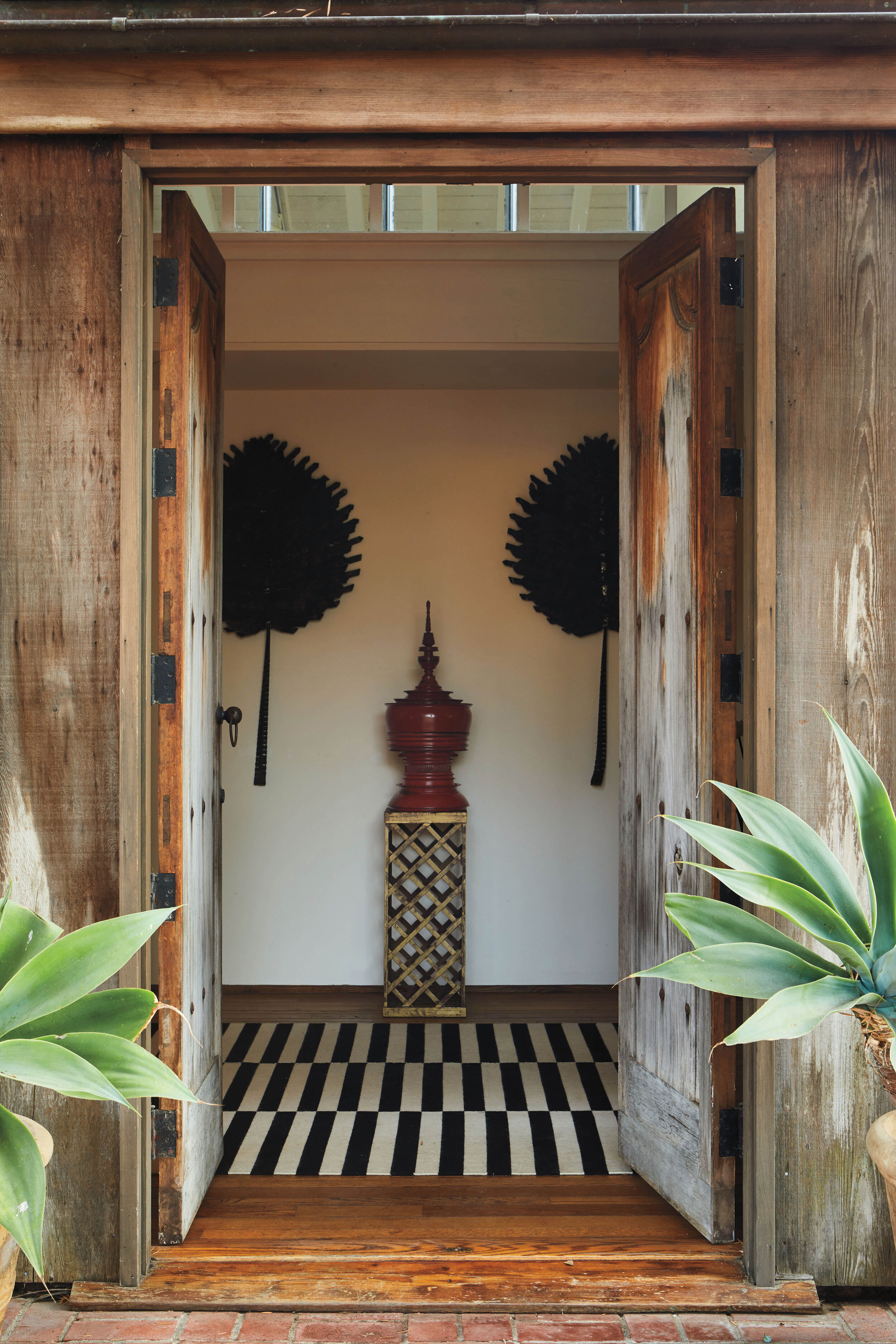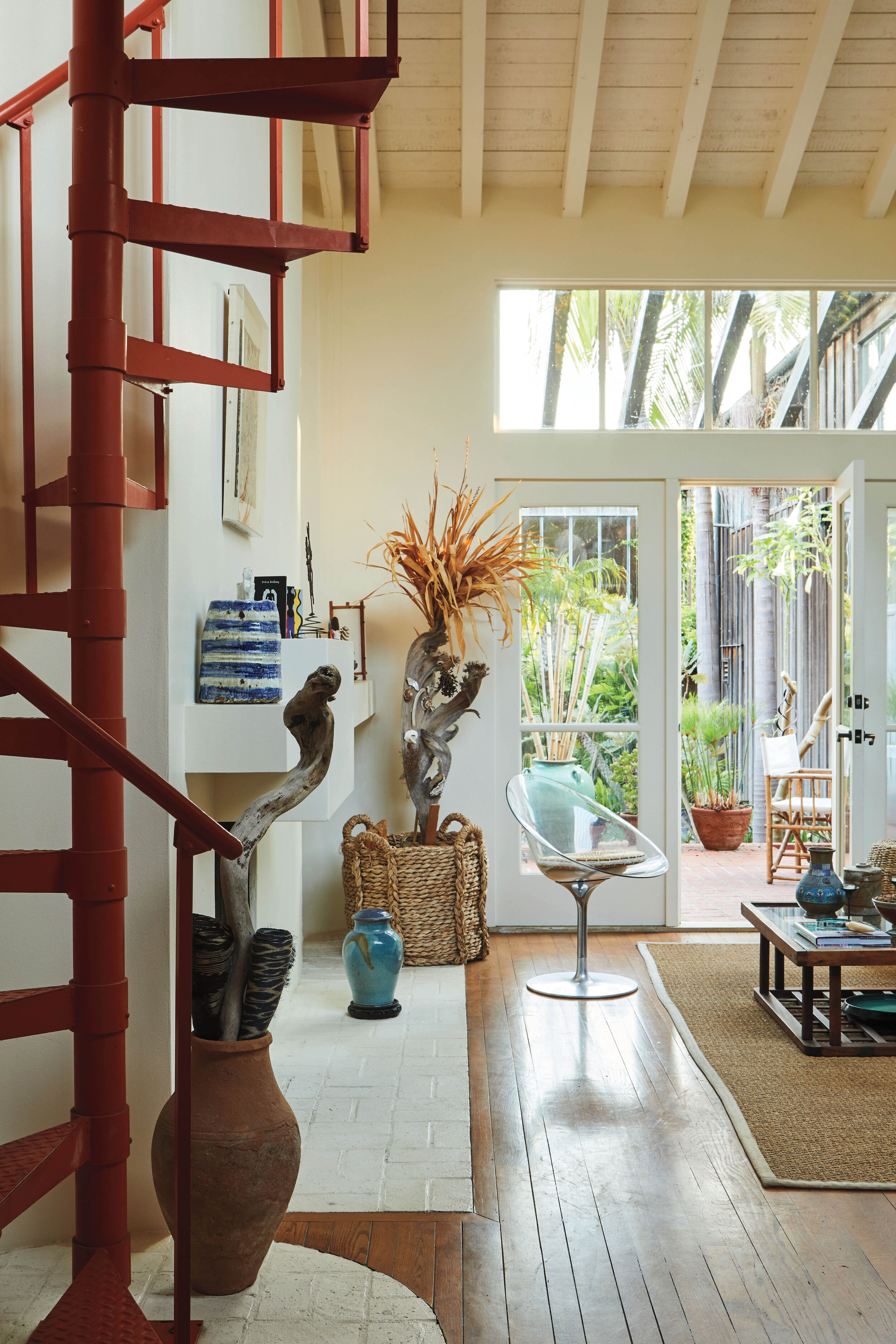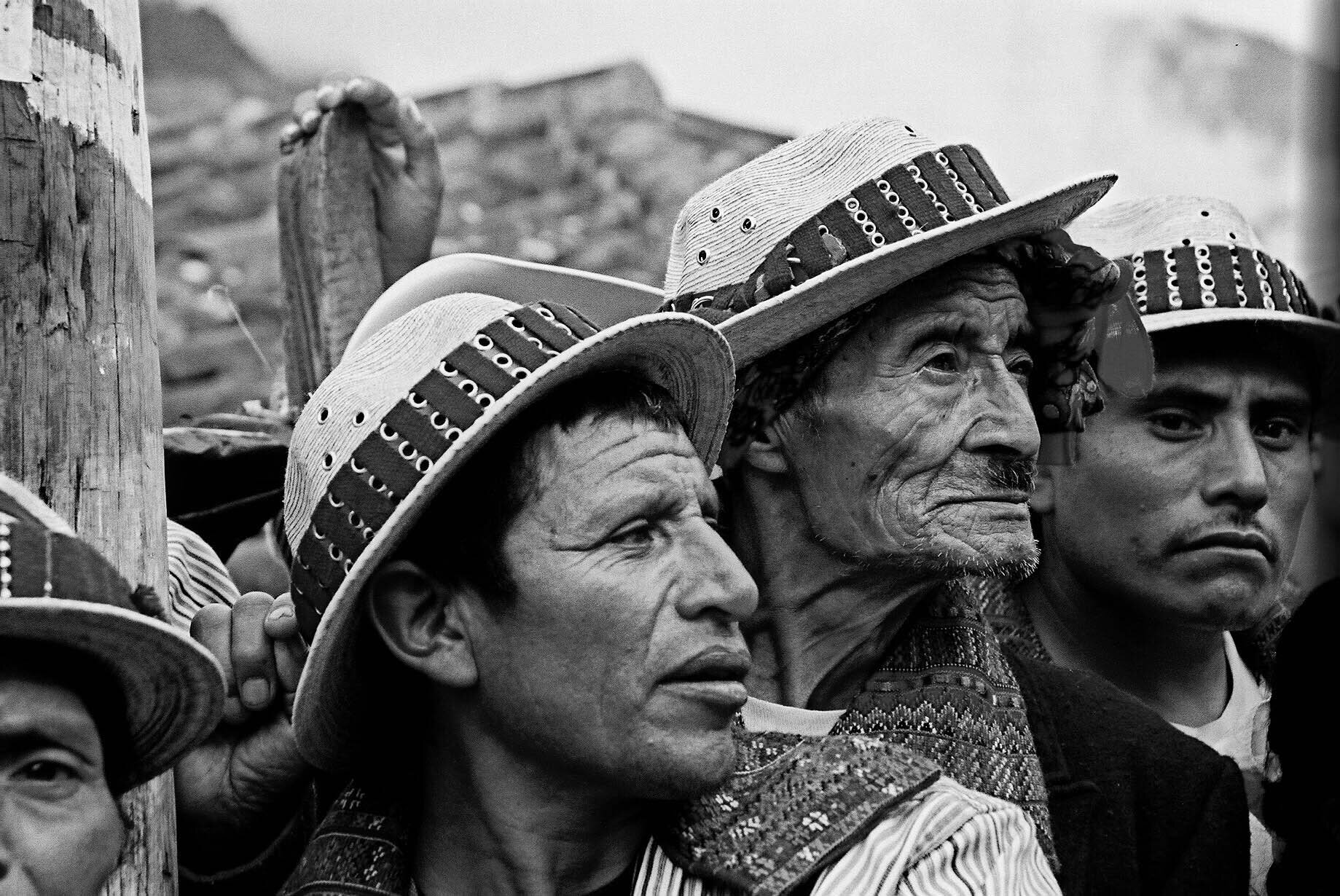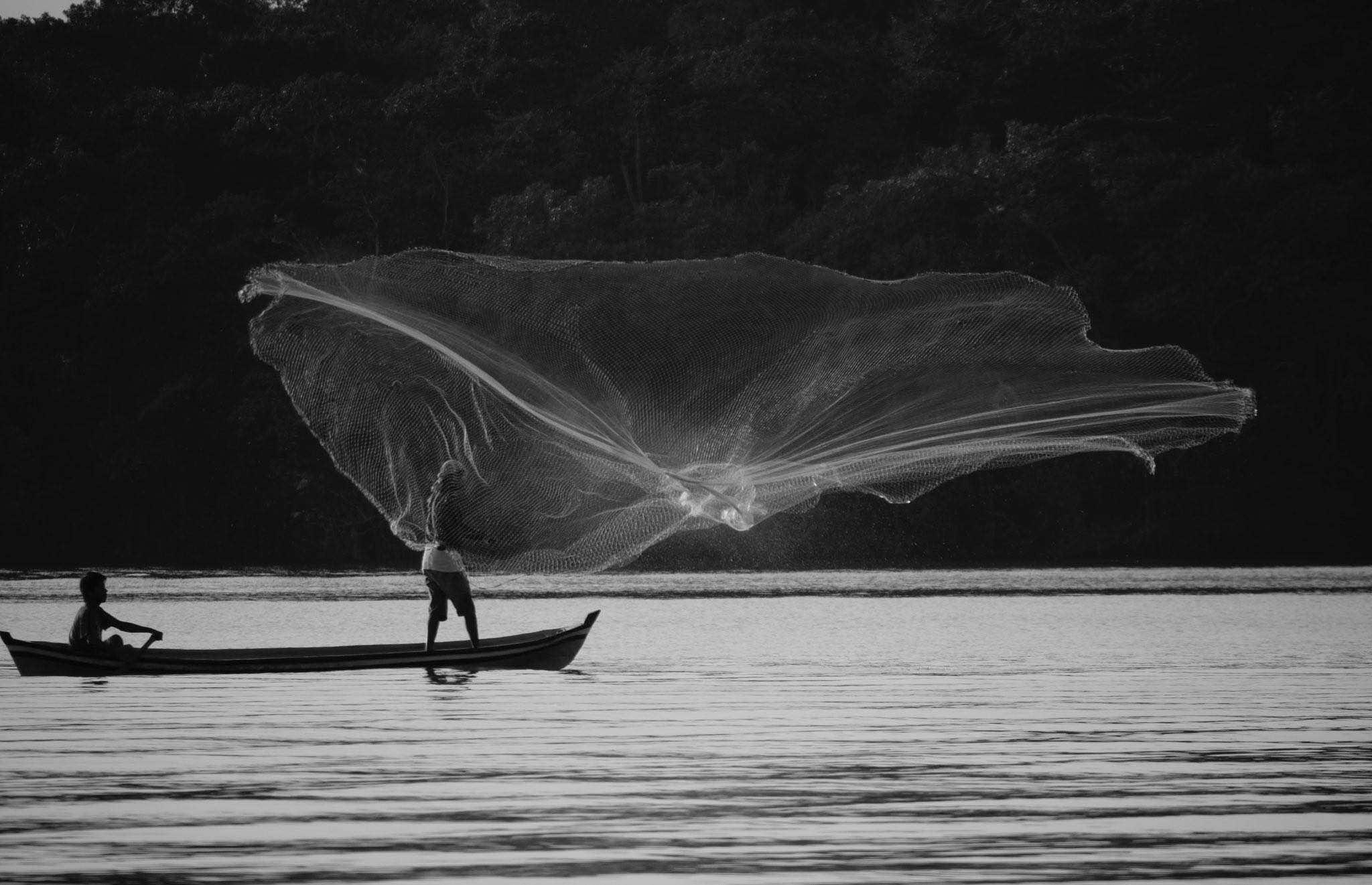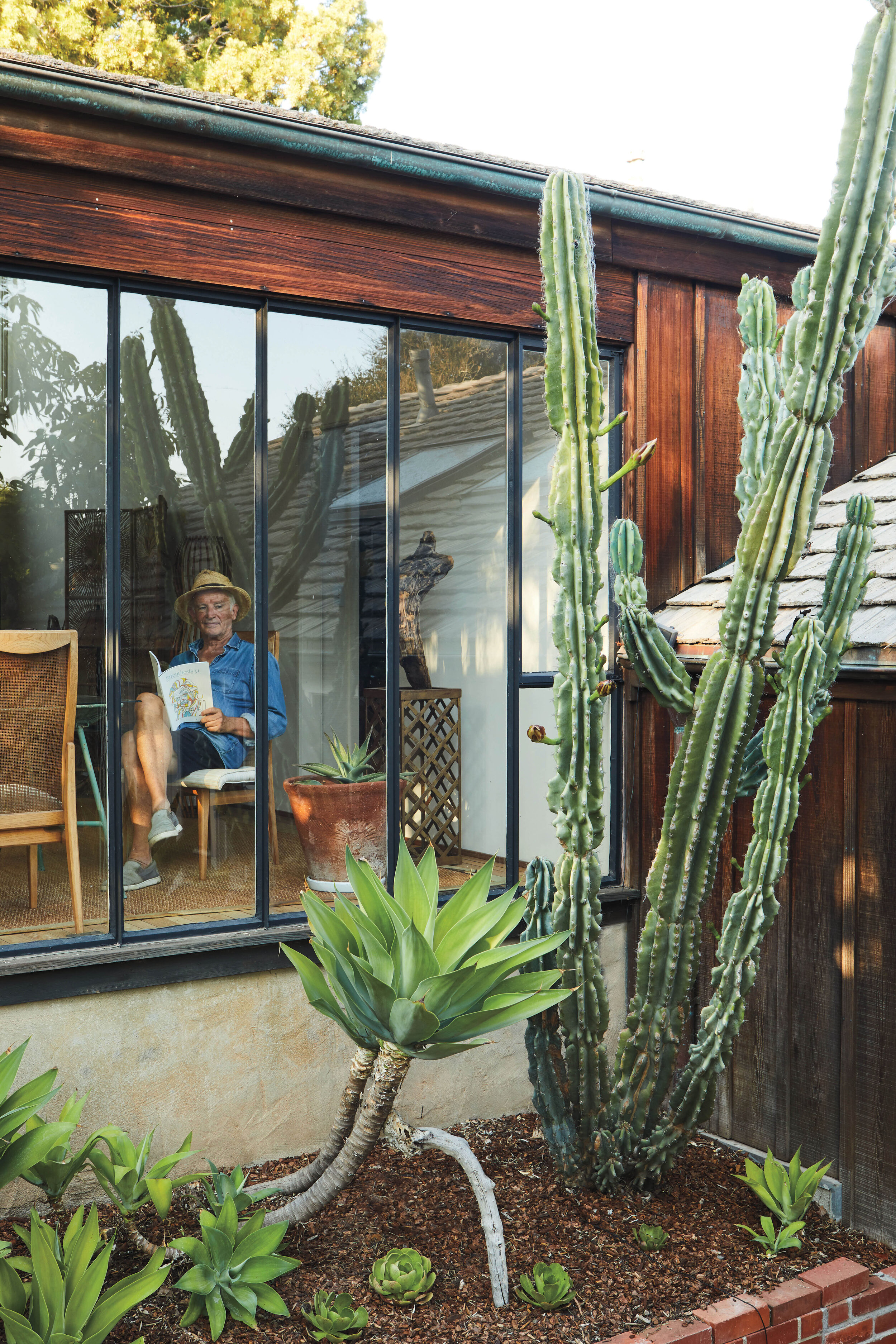Wild at Heart
The exotic world of John Edward Heaton
Written by L.D. Porter | Photographs by Sam Frost
The best homes are, in essence, portraits of their owners, and John Edward Heaton’s Carpinteria residence is an inspiring example. Designed by architect Robert Garland for painter Howard Warshaw in the 1960s, it’s a cluster of handsome wood-sided buildings with a large barnlike art studio. For that reason, presumably, the house has always been inhabited by artists. (Although Heaton resists being labeled anything ending in “ist,” institutions exhibiting his stunning photographs—including the Santa Barbara Museum of Art—would argue the title applies.)
John Edward Heaton in his art studio surrounded by textiles from Atelier Xenacoj, the workshop of Kaqchikel Maya women weavers he founded in Guatemala.
Coming from Quinta Maconda—his antique-filled colonial residence/boutique hotel in Antigua, Guatemala, where he and his late wife, Catherine Docter, hosted guests like Francis Ford Coppola and Harrison Ford—Heaton was immediately attracted to the Carpinteria home’s architecture. “It’s an authentic California house; it was made in California,” he says. “In my journey I’ve always wanted to have houses of the place. I didn’t want to have a French house in Mexico or a Mexican house in France.” (The couple acquired their California outpost in 2017.)
The exterior may be Californian, but the home’s interiors are pure Heaton. Carefully curated objets culled from exotic travels coexist with bargained-for treasures from the Ventura County swap meet. Each room features at least one composition of driftwood, shells, or other detritus gleaned from Heaton’s daily beach perambulations. It’s a fearless aesthetic, guided by an insatiable curiosity about the world and its numerous cultures. His is a naturally educated eye.
Born in Paris to a French mother and an American father, Heaton spent his youth at boarding schools in England, France, and Switzerland. The first glimmer of his independent spirit emerged at St Andrew’s School in England, at age 8, when he and a schoolmate ventured without permission beyond the large abandoned chalk pit marking the perimeter of the school grounds. Their foray resulted in corporal punishment, but Heaton considered his painful bruises “stripes of glory,” evidence of a lesson learned: no pain, no gain. (He titled his first book of photographs Beyond the Chalk Pit.)
To be fair, Heaton’s restless spirit was inherited. His paternal ancestors were shipowners and traders from England who journeyed to America in the 17th century and plied the trade routes to the West Indies and China. (His great grandfather is said to be the first American to enter Beijing’s Forbidden City.) His father, “Jack” R. Heaton, was also an adventurer who explored Tahiti in the 1920s, Brazil and the Amazon in the 1930s, and the Chilean Andes in the 1940s. During the same period Jack won three Olympic medals—two silver and a bronze—as a bobsledder and skeleton racer.
That heritage is a mandate of sorts, but Heaton has surely lived up to it. After a stint at San Francisco’s Art Academy, he embarked on a three-year journey through Mexico, living in his Jeep and learning “fishy Spanish” working on a shark-fishing boat. Later he befriended followers of Maximón, a Mayan deity, and filmed their elaborate rituals. He accompanied the Dalai Lama to Russia. From 1977 onward he managed to compile an archive of 50,000 still images and 100 hours of film footage recording other extensive travels to Central America, Madagascar, India, Indonesia, Papua New Guinea, Irian Jaya, the Trobriand Islands, the U.S., France, and Peru.
Heaton also built a jungle eco-retreat (Rancho Corozal) so remote it lacks electricity; he restored several important Spanish colonial buildings in La Antigua Guatemala, a UNESCO World Heritage Site; and he founded Atelier Xenacoj, a workshop of Kaqchikel Maya women weavers who produce one-of-a-kind textiles using traditional techniques and vegetable dyes.
Over the years the travel press took notice of Heaton’s exploits, lauding his expertise as a hotelier while dishing on his dashing demeanor. (One Daily Mail writer dubbed him “impossibly handsome.”) And despite his refusal to embrace the artist label, both the Maison Européenne de la Photographie and The Latin American Library at Tulane University mounted exhibitions of his breathtaking black-and-white photographic portraits of everyday life in Guatemala. (His work also resides in numerous prestigious university collections and private collections.)
Ultimately, according to Heaton, it all boils down to exploring the world and the people in it: “Titles for me were not that important; it was what I was able to do. To sum it up, my life was spent trying to have a good life—not materialistically, but trying to have an interesting life where I could be an adventurer. Live in a beautiful house but go to the Ventura swap meet every Wednesday and chat with the people there. I think everybody’s interesting. For me, people at the Ventura swap meet are as interesting as the Lacandon Maya people I met in the jungle, because they’re people with stories.” •


